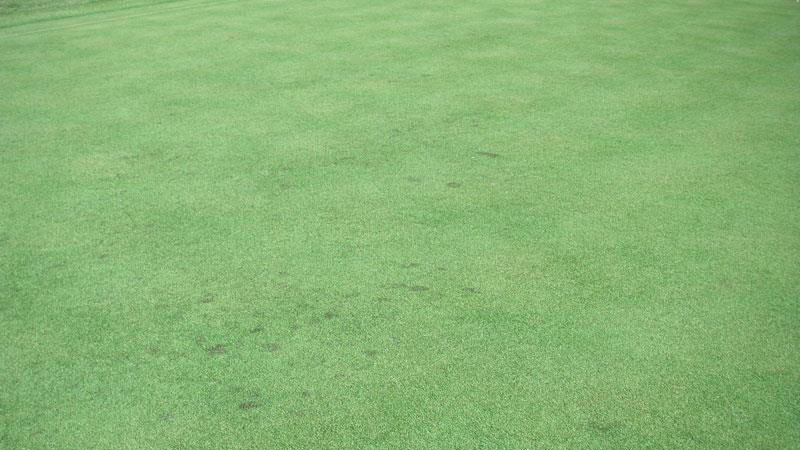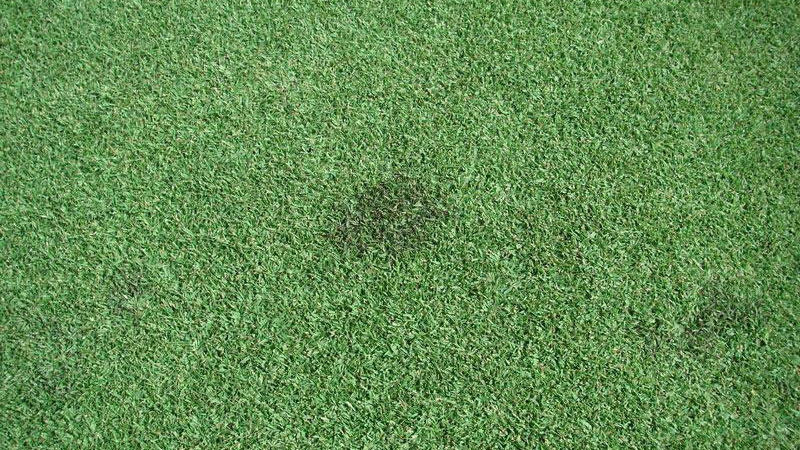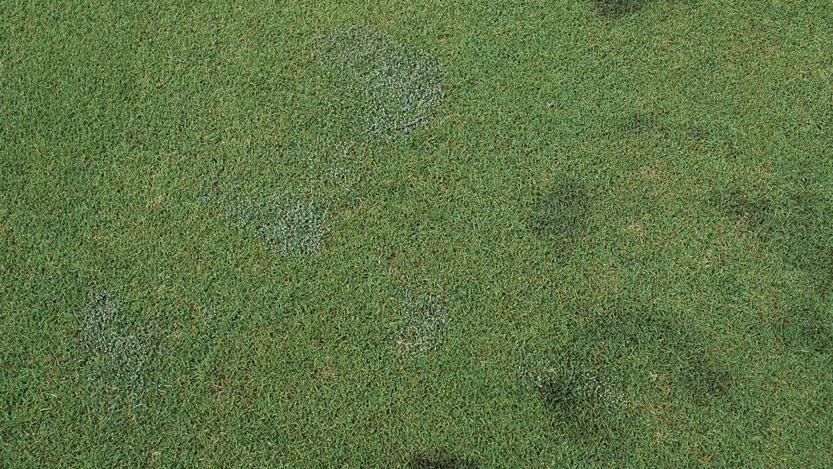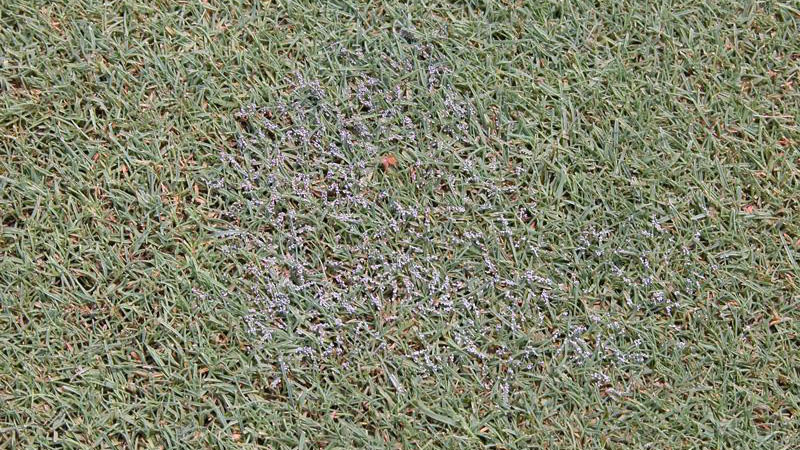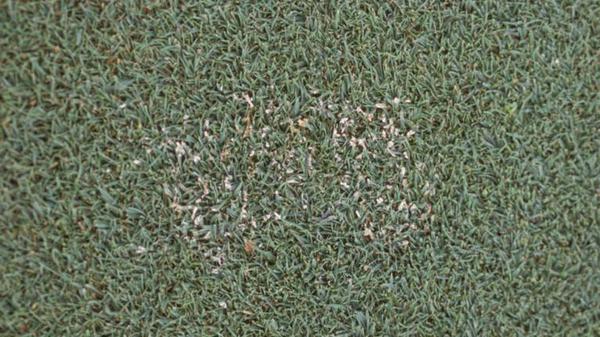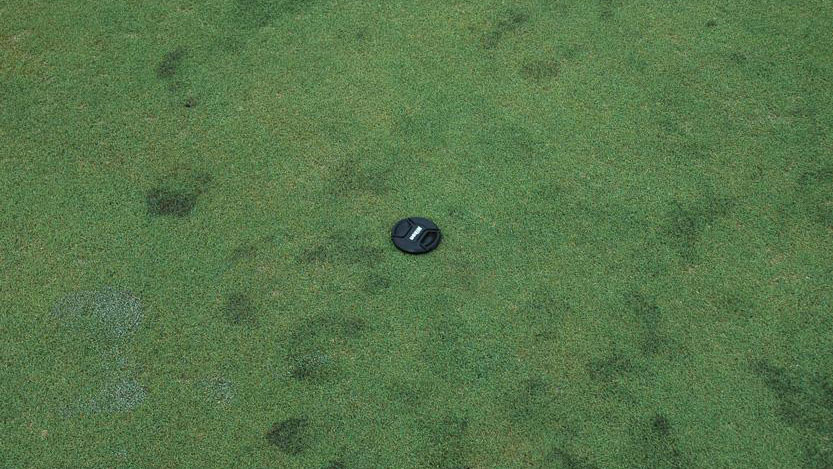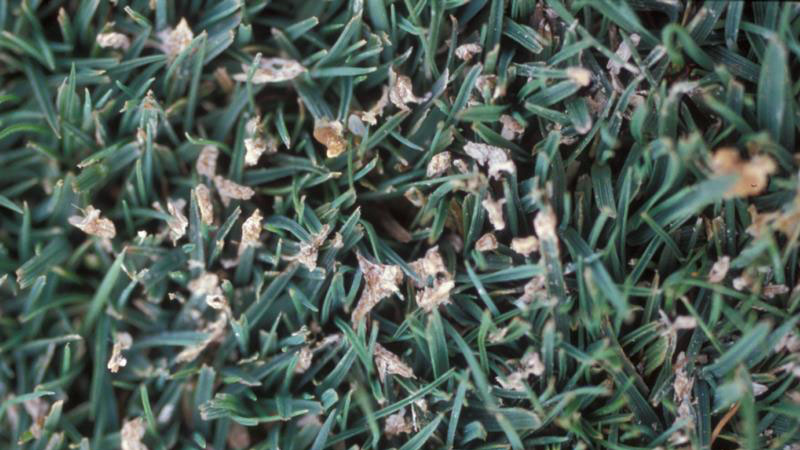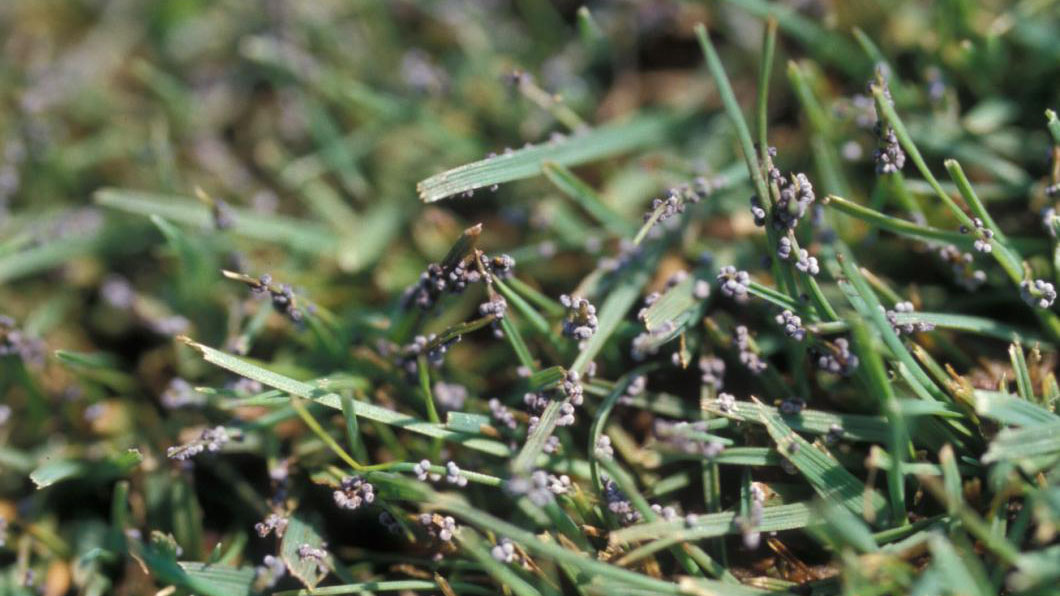Slime Mold in Turf
en Español / em Português
El inglés es el idioma de control de esta página. En la medida en que haya algún conflicto entre la traducción al inglés y la traducción, el inglés prevalece.
Al hacer clic en el enlace de traducción se activa un servicio de traducción gratuito para convertir la página al español. Al igual que con cualquier traducción por Internet, la conversión no es sensible al contexto y puede que no traduzca el texto en su significado original. NC State Extension no garantiza la exactitud del texto traducido. Por favor, tenga en cuenta que algunas aplicaciones y/o servicios pueden no funcionar como se espera cuando se traducen.
Português
Inglês é o idioma de controle desta página. Na medida que haja algum conflito entre o texto original em Inglês e a tradução, o Inglês prevalece.
Ao clicar no link de tradução, um serviço gratuito de tradução será ativado para converter a página para o Português. Como em qualquer tradução pela internet, a conversão não é sensivel ao contexto e pode não ocorrer a tradução para o significado orginal. O serviço de Extensão da Carolina do Norte (NC State Extension) não garante a exatidão do texto traduzido. Por favor, observe que algumas funções ou serviços podem não funcionar como esperado após a tradução.
English
English is the controlling language of this page. To the extent there is any conflict between the English text and the translation, English controls.
Clicking on the translation link activates a free translation service to convert the page to Spanish. As with any Internet translation, the conversion is not context-sensitive and may not translate the text to its original meaning. NC State Extension does not guarantee the accuracy of the translated text. Please note that some applications and/or services may not function as expected when translated.
Collapse ▲Symptoms
Many small, round pustules are observed on the turfgrass leaves in small patches. The patches develop very quickly, usually overnight. The pustules may be purple, white, gray, yellow, or orange in color. The slime mold organisms do not infect the turf or cause direct harm, but they can cause mild yellowing of the leaves due to their shading effect. Slime molds are unsightly but are not considered harmful.
Development Factors
Slime mold spores survive in the soil and thatch. During warm, wet weather the spores germinate and develop into a slimy mass that grows over the soil and nearby plant parts during wet weather. The pustules observed on turfgrass leaves are reproductive structures that contain numerous spores.
Flushes of slime mold growth are often observed after heavy rain storms that were preceded by long periods of dry weather.
Cultural Control
Slime mold pustules typically disappear after 2 to 3 days; therefore, no control practices are needed. If the growth is particularly unsightly, the pustules may be removed by brushing, mowing, or washing the turf.
Chemical Control
Fungicides are available for slime mold control but are only necessary in severe cases.
* Products marked with an asterisk are not labeled for home lawn use.
| Fungicide and Formulation1 | Amount of Formulation2 | Application Interval (Days)3 | Efficacy Rating | Resistance Risk | FRAC Code4 |
| mancozeb (Fore)* | 4 to 8 | 10 | +++ | Low | M3 |
| 1 Other trade names with the same active ingredients are labeled for use on turfgrasses and can be used according to label directions. 2 Units are oz, fl oz, or lb depending on formulation. Apply fungicides in 2 to 5 gallons of water per 1,000 square feet according to label directions. Use lower rates for preventive and higher rates for curative applications. 3 Use shorter intervals when conditions are very favorable for disease. 4 Fungicide Resistance Action Committee code. Products with same code have the same mode of action and are in the same chemical class. * Products marked with an asterisk are not labeled for home lawn use. |
|||||
| Efficacy Rating ++++ = excellent control when conditions are highly favorable for disease development +++ = good control when disease pressure is high, excellent control when disease pressure is moderate ++ = good control when disease pressure is moderate, excellent control when disease pressure is low + = good control when disease pressure is low ? = not rated due to insufficient data |
|||||
| Resistance Risk Low = Rotate to different chemical class after 3-4 applications; tank mixing not necessary Medium = Rotate to different chemical class after 1-2 applications; tank-mixing with low or medium risk product recommended High = Rotate to different chemical class after EVERY application; tank-mix with low or medium risk product for EVERY application ? = not rated due to insufficient data |
|||||
Species Data
- HOST SPECIES
- all
- MONTHS WITH SYMPTOMS
- April to September
- STAND SYMPTOMS
- FOLIAR SYMPTOMS LOCATION / SHAPE
- FOLIAR SYMPTOMS COLOR
- all
- ROOT / CROWN SYMPTOMS
- none
- FUNGAL SIGNS
- pustules



